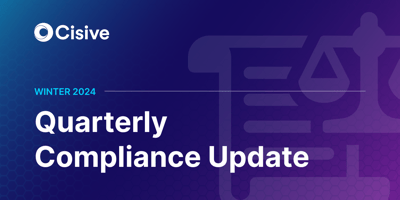

Stay informed, stay compliant.

Pay transparency is becoming more common due to worker pressure and government action. This has led to companies introducing their own pay transparency policies.
A pay transparency policy is any policy where information about wages and salaries is shared with employees. This includes pay ranges, details about how salaries are calculated, and how pay raises are determined.
Pay transparency is an increasingly used buzzword among governments, workers, and organizations.
In the past, talking about pay has been somewhat taboo, but this is changing. Stagnating wages, increased unionization, and self-reported wage tools have made people more open about what they earn.
Organizations that become transparent about pay have the opportunity to build trust with employees, increase productivity, and improve recruitment.
But even if you aren’t sure about opening wage discussions in your workplace, there are laws governing pay disclosure in an increasing number of U.S. states. Understanding what pay transparency is, the legalities involved, and the benefits can help you decide how to introduce it in your workplace.
In essence, pay transparency is openly sharing pay information with employees and job candidates. This can include information about pay ranges, how salaries are determined, and how workers can get pay increases.
Employees and job candidates are interested in how easy it is to find and share information about their pay rates.
For organizations, pay transparency often comes down to a communications policy that provides pay-related information to employees. This can help foster openness and trust about pay within companies.
The goal of decreasing pay inequity has been the biggest driver of the pay transparency movement. Census data from 2020 showed that women earn 83 cents for every dollar earned by Caucasian men.
For women of color, the figure is even lower. Pay transparency is one step that can help close the pay gap. A 2019 Canadian study looked at a number of universities before and after pay transparency laws were implemented.
It found that the gender pay gap was reduced by 20 to 40 percent after the laws came into effect.
Pay transparency also allows employees to have a clearer picture of the financial aspects of their role. As this promotes a more open and equitable workplace, it has a tendency to increase employee engagement and satisfaction.
There are a number of laws that cover pay transparency. The first to be aware of is the National Labor Relations Act (NLRA), which allows employees to discuss their wages with each other.
Any company governed by the NLRA cannot fire or discriminate against employees for discussing their wages. Organizations not governed by the NLRA generally have to adhere to a similar standard due to an Executive Order signed by President Obama.
This is the only federal law that governs pay transparency, but an increasing number of states and cities have introduced pay disclosure laws.
The specifics differ, but these laws generally require that employers list a pay range on job advertisements. In some cases, they must also tell employees who are changing roles what their new pay will be.
On the other side, some states also have salary history bans. This stops you from asking job candidates for a pay history. Although you can ask about salary expectations, you can’t base a pay offer on what the person has previously earned.
If you operate in an area that has pay disclosure laws, make sure you understand your requirements under that law.
The reality of remote work means you may be governed by a law even if you’re not located in that state. The best way to ensure you remain compliant is to regularly review current and upcoming pay transparency laws.
As of the time of this writing, the following states and localities have pay transparency laws.
Effective January 1, 2023
Effective January 1, 2021
Effective October 1, 2021
Effective January 1, 2023
Effective January 1, 2024
Effective October 1, 2020
Effective October 1, 2021
Effective April 13, 2022
Effective September 17, 2023
Effective November 1, 2022
Effective September 1, 2022
Effective November 6, 2022
Effective March 13, 2020
Effective June 25, 2020
Effective January 1, 2023
Effective January 1, 2023
Pay transparency can have major impacts on hiring. A survey from Indeed suggests that those impacts are likely to be positive, with 75% of respondents more likely to apply for a job when the salary is listed.
You can also save time in your recruitment process if you’re only receiving applications from people who are willing to work for the salary you’re offering.
Pay transparency also makes for a better working environment for new and current employees. Clear communication about salaries builds trust with employees, creating a culture of openness. Your workers will believe they’re being paid fairly.
The higher morale that comes with employee trust encourages productivity and performance. Workers feel valued for what they do and work harder.
Be warned, though. A study cited in the Harvard Business Review shows that if that transparency shows unfair pay practices, productivity is likely to fall.
Pay transparency not only builds trust between employers and employees, it can build trust between colleagues. If there are fewer rumors about pay, there’s less resentment.
This can create a more collaborative and supportive environment, which again leads to more productivity and employee engagement.
If you aren’t in a location that requires pay transparency, you may be wondering whether to implement it in your workplace.
Yes, there are advantages, but there are also drawbacks you should consider. Fortunately, for organizations, the benefits generally outweigh the disadvantages, but understanding the possible drawbacks can help you plan for them.
For most companies, the drawbacks come from what the transparency reveals, not the act of being transparent. If you have pay equity issues, a pay transparency policy means everyone knows.
Employees may become disengaged, and you may have higher staff turnover. If someone shares their issues with pay inequity on social media, it may also impact your brand.
Fixing the discrepancies can certainly help, but you should also make sure your employees understand what pay rates mean and how their performance affects their pay.
Pay transparency may also shift employee priorities. If there’s one performance indicator that tends to equate to higher pay, workers are likely to concentrate on that.
This often means softer measurements, such as cooperation and mentorship, are ignored.
When it comes to recruiting, the biggest risk is a reduction in the candidate pool.
Yes, disclosing pay ranges normally makes people more likely to apply for a job, but if your offered salary is lower than average, you’ll have fewer applicants. You may need to increase your offer to get the best candidates.
Pay transparency may also endanger employee retention. Competing organizations know what they have to offer to lure top talent away.
Your employees can also use that knowledge when negotiating for higher wages. This can impact your company if you don’t have the budget to offer similar wages.
You may want to consider other forms of compensation instead. For example, some employees may accept additional career development training in lieu of more monetary compensation.
If you’ve decided to adopt a policy of pay transparency in your company, there are steps you can take to help the process go smoothly.
Pay transparency laws generally only require that companies disclose a limited amount of information. Within your company, you have the power to decide the best level of transparency.
You could choose to disclose salary ranges, information about pay practices, or individual employee salaries. Think about the norms in your industry and what works for your company culture.
Review all your current salaries and pay practices. This will let you identify inconsistencies and potential issues. It’s better to know that pay inequities exist before you release the information, rather than after.
It gives you a chance to address the issues and make changes to promote pay equity. You should conduct these pay audits regularly to ensure your pay practices continue to be fair and equitable.
Explain to your employees why you’re adopting a pay transparency policy. Include information about the benefits it will bring to your workers and the organization. You should also provide avenues for employees to provide feedback and address any issues that arise.
Train and support your HR team and managers during the process. Make sure they have the knowledge and skills to successfully communicate with employees about pay transparency and answer questions and concerns. This will help pay discussions in the organization remain consistent.
Take on feedback from employees, managers, and HR staff as part of the review process. Also look at how the policy has impacted recruiting, employee morale, and turnover. If you need to, adjust the policy to better align with your goals and culture.
Ready to take the next step in optimizing your HR practices? Let’s connect! Explore how our services can support your organization’s goals. Speak to a Cisive expert today to schedule a free consultation.